#7th century art
Text
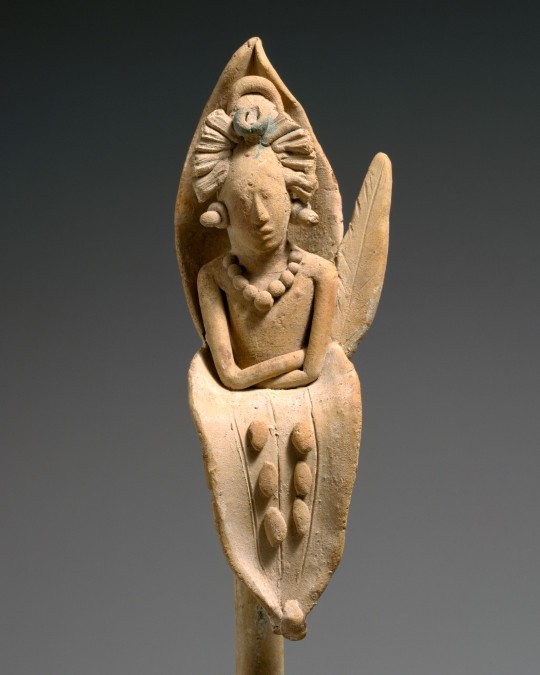
Maize God emerging from a flower - Mayan, 7th century
#art#sculpture#Maize God emerging from a flower#Mayan art#7th century art#The Metropolitan Museum of Art
6 notes
·
View notes
Text


danmarch 🐉💎
#honkai star rail#dan heng#march 7th#danmarch#fanart#hsr#what else do i tag. i have no idea#anyway. im breaking my VERY LONG oc art streak to post my one(1) contribution to star rail#i care them very much#ive been playing this game so religiously and they have not left my team#tragic past(emo) vs tragic past(girly pop)#theres NO WAY with marchs very teenage girl mind that she does not have a crush on the hot cool mysterious yet caring dragon guy#who stays in the room right next to her#and the fact that he teases her so much........#the whole ass belabog quest he throws in little harmless march roasts every so often#he fucking CARE her#i bets shes like a filipino mom with that camera. every oppertunity (picture!!!!)#and dan heng gets dragged into it#he is honing his photography skills against his will#any nice place? shes like (lemme pose can you get a photo of me?)#dan heng just sighs#they bond over silently judging stelle rummaging through the garbage#cast each other that best friend glance as half her body is sticking out of a trash bin#i like to think you see them hanging out on the train together#with dan heng reading some obscure 8th century book on civilization pattern and development#and march is humming and putting stickers and aesthetic shit in her scrapbook#taping a piece of antimatter legion loot in the middle of a page#and with bubbly handwriting (we beat some bad guys today!!! <333 so fun!!)
475 notes
·
View notes
Text

~ Furniture plaque carved in relief with lion-headed figure.
Period: Neo-Assyrian
Date: ca. 8th–7th century BC.
Place of origin: Mesopotamia, Nimrud (ancient Kalhu)
Culture: Assyrian
Medium: Ivory
#ancient#ancient art#history#museum#archeology#ancient sculpture#ancient history#archaeology#mesopotamia#Assyria#neo Assyria#assyrian#nimrud#kalhu#lion#plaque#furniture plaque#ca. 8th century B.C.#ca. 7th century B.C.
919 notes
·
View notes
Text

Japan's third empress regnant, Empress Jitō (645-703) was a powerful and effective ruler. Shrewd, bold and clever, she walked in the footsteps of empresses Suiko and Saimei and prevailed against all odds.
A troubled youth
Jitō was the daughter of Prince Naka no Ōe, the son of empress regnant Saimei. The year she was born, her father killed a minister in front of his mother, leading to her abdication.
Jitō’s maternal grandfather committed suicide three years later, having been wrongly accused of plotting against Prince Naka no Ōe. Jitō’s mother, Ochi, died of grief. Jitō was thus placed in her grandmother's care and raised by the former empress.
At age 12, she was married to her paternal uncle, Prince Ōama, who was 27. Jitō was a reserved person with a brilliant intelligence and much liked by the court. She was curious, open-minded and studied Chinese literature. The death of her grandmother in 661 pained her greatly. In 662, Jitō gave birth to her only child: prince Kusakabe. Her father then ascended took the throne as Emperor Tenji in 667.
Succession struggle
The question of Emperor Tenji’s succession soon arose. The sovereign favored Jitō’s half-brother, Prince Ōtomo, but Prince Ōama had his own ambitions. He and Jitō left the court, waiting for an opportunity to strike.
Ōtomo indeed succeeded Tenji, but Ōama revolted against him soon after with Jitō's support. When they arrived at Ise province, she dressed in male clothes and personally addressed the troops. She also worked on tactical plans. As Ōama left to leave an offensive in Ōmi province, Jitō took command of the troops stationed at Ise. She had indeed volunteered to defend the shrine dedicated to the sun Goddess, Amaterasu.
Their joint efforts led to their success. Ōama ascended the throne in 673 as emperor Tenmu, with Jitō becoming his co-ruler.
The radiant empress
Jitō was very influential in court matters. This was reflected in the choice of Tenmu's heir. He could have chosen his son by another woman, Prince Ōtsu, as his heir, but chose Jitō’s son, Prince Kusakabe, instead.
As Tenmu died in 686, Jitō took the matter in hand. She declared Ōtsu guilty of treason and forced him to commit suicide. She then organized grandiose funerals for her husband and wrote poems expressing her grief.
Oh, the autumn foliage
Of the hill of Kamioka!
My good Lord and Sovereign
Would see it in the evening
And ask of it in the morning.
On that very hill from afar
I gaze, wondering
If he sees it to-day,
Or asks of it to-morrow.
Sadness I feel at eve,
And heart-rending grief at morn—
The sleeves of my coarse-cloth robe
Are never for a moment dry.
Her son died in 689. Since her grandson was too young to rule, Jitō became empress regnant.
She reformed the country, establishing a strong central power and surrounded herself with capable ministers. In 689, she enacted a mandatory code for all local governors. In 690, she launched a population census.
She reformed the army, improving the recruitment conditions and the troops' training. A protector of the arts, she also actively participated in the propagation of Buddhism. Poetry became more refined during her reign. One of her poems was later included in the popular Hyakunin Isshu anthology:
The spring has passed
And the summer come again
For the silk-white robes
So they say, are spread to dry
On Mount Kaguyama
Jitō made her predecessors' objective of replacing the tribal system with a strong central power a reality. Her rule was synonymous with a degree of stability that neither her father nor husband were able to reach. She can be regarded as one of the true founders of Japan’s imperial monarchy. The empress was also fond of travels. In 692, she undertook a trip symbolic trip to Ise province, strengthening her authority and gaining the support of the local people.
The empress indeed took advantage of the Shinto rituals and the image of the sun Goddess to reinforce her legitimacy and used the links between the deity and the imperial family. Such was her prestige that Kakinomoto no Hitomaro, one of the greatest poets of his time, compared her to a goddess.
The retired empress
Jitō’s grandson, Monmu (r. 697-707) was ready to take the throne. She stepped back as Daijō Tennō (or “retired emperor”), becoming the first sovereign in Japanese history to assume this title. The power was in reality still in her hands. The Taihō Code was promulgated in 701, reforming governmental administration as well as administrative and penal law. This was only made possible by the reforms enacted during her reign.
In 702, she went through another tour of inspection of the eastern provinces and bestowed gifts and court ranks on the local officials and leading farmers. Jitō died in the first month 703 and her ashes were interred in her husband's tomb.
Here's is the link to my Ko-Fi if you like what I do! Your support would be greatly appreciated.
Further reading:
Aoki Michiko Y., "Jitō Tennō, the female sovereign",in: Mulhern Chieko Irie (ed.), Heroic with grace legendary women of Japan
Souyri Pierre-François, Nouvelle histoire du japon
#history#women in history#women's history#women's history month#japan#japanese history#powerful women#herstory#historyedit#7th century#queens#historyblr#historical figures#japanese prints#japanese art
111 notes
·
View notes
Text

A PAIR OF ETRUSCAN BRONZE VOTIVE HANDS
CIRCA 7TH CENTURY B.C.
9 ¼ in. (23.4 cm.) high (taller).
#A PAIR OF ETRUSCAN BRONZE VOTIVE HANDS#CIRCA 7TH CENTURY B.C.#bronze#bronze sculpture#ancient artifacts#archeology#archeolgst#history#history news#ancient history#ancient culture#ancient civilizations#etruscan history#etruscan art#ancient art
98 notes
·
View notes
Text
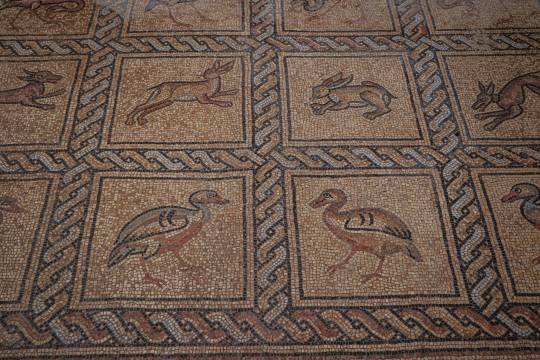



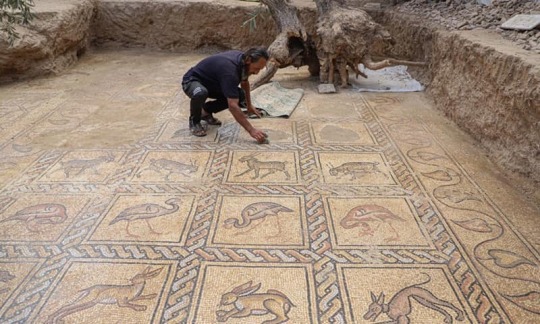
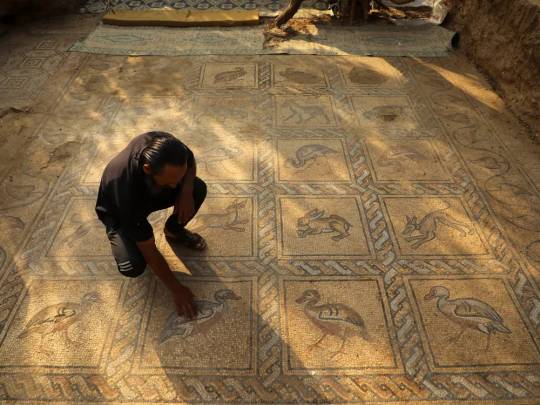
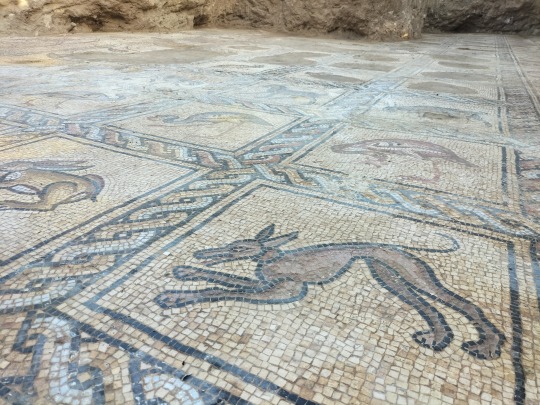
Byzantine Mosaic, Bureij refugee camp, Gaza Strip, Palestine,
5th to 7th centuries AD,
Salman al-Nabahin, a Palestinian farmer, unearthed the mosaic pavement, thought to date from the fifth to the seventh century AD, while working in his olive orchard in Bureij refugee camp, about half a mile from the border with Israel.
Trying to understand why some trees had not properly taken root, Nabahin said he and his son began digging. Then the son’s axe hit something hard and unfamiliar in appearance.
The Palestinian ministry of tourism and antiquities said the mosaic included several panels depicting animals and other features of social life during the Byzantine era, the continuation of the Roman empire in eastern provinces from the fifth century.
Gaza is rich in antiquities, having been an important trading spot for civilisations dating as far back as the ancient Egyptians and the Philistines depicted in the Bible, to the Roman empire and the Crusades from the 11th to the 13th centuries.
Several discoveries have been made in recent years. Due to a lack of funds and expertise, Gaza has usually invited international groups to help with the process of excavation and preservation.
#art#history#design#style#archeology#palestine#mosaic#gaza#gaza strip#5th century#7th century#refugee camp#byzantine#human history#free palestine#bureij#animals
102 notes
·
View notes
Text


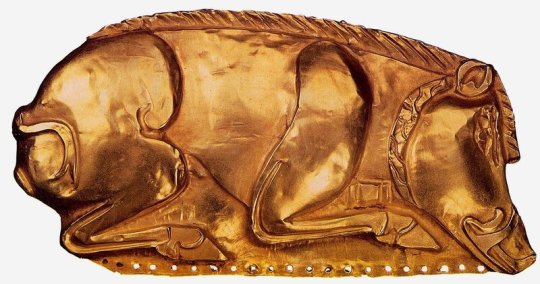
Scythian sword with boar plaque decoration 7th-4th C. BCE. Barrow near Oleksandrivka village, Dnipropetrovsk Oblast. The Museum of Historical Treasures of Ukraine, Kiev.
#scythian#scythian gold#sword#swords#scabbard#art#ancient art#ancient#antiquities#antiquity#museums#artifacts#7th century bce#4th century bce
577 notes
·
View notes
Text

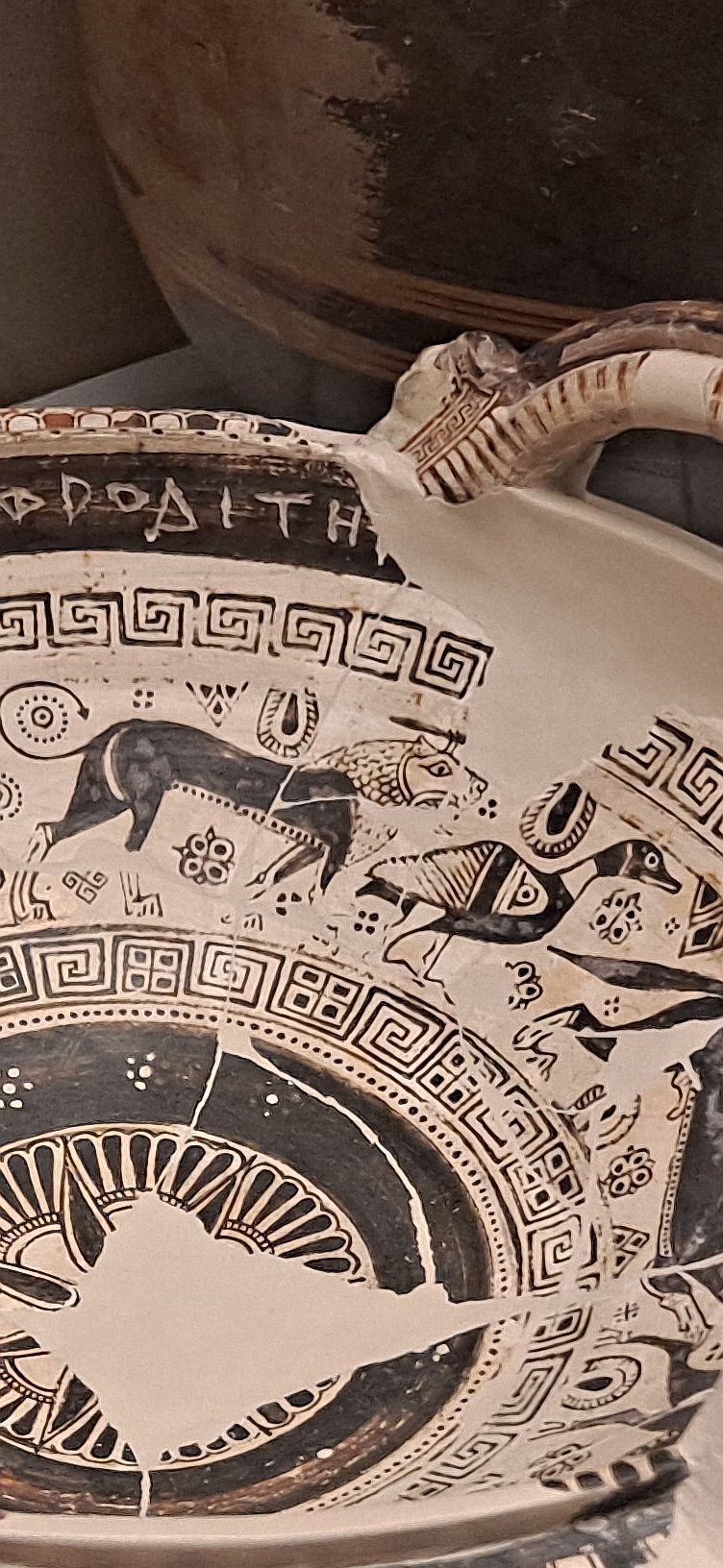
Greek birds and other animals
* 620-620 BCE
* Sanctuary of Aphrodite, Naukratis
* British Museum
* London, July 2022
139 notes
·
View notes
Photo


View of the Roman Forum with the Column of Phocas and the Temple of Saturn and The Tiber at the Outskirts of Rome by Victor-Jean Nicolle
French, late 18th or early 19th century
pen and brown ink, brush and gray wash over red chalk
Metropolitan Museum of Art x x
#Ancient Rome#Roman Forum#Tiber#Temple of Saturn#Column of Phocas#(which is apparently the last addition made to the Forum in ancient times#dedicated to the Eastern Roman Emperor Phocas in the 7th century)#French#art#drawing#pen and ink#brush and wash#chalk#Victor-Jean Nicolle#ruins#Metropolitan Museum of Art
62 notes
·
View notes
Text

Byzantine consorts/Augustae: Aelia Verina - Euphrosyne Porphyrogenita
457 AD - 829 AD
I am all caught up for now! Time to get back to actually listening to the podcast…
#digital art#history art#byzantine empire#byzantine empress#byzantium#empress theodora#pride#gay#5th century#6th century#7th century#8th century#9th century#roman tag#greek tag
21 notes
·
View notes
Text


Mayan Limestone Stela from Guatemala dated to around 683 CE on display at the Royal BC Museum in Victoria, Canada
Lady Six Sky was one of the most important queens of the Maya. Daughter of Mayan nobility she arrived at Naranjo in 682 CE to create a new royal line after a series of war. She ruler between 682 and her son's accession to the throne in 693, continuing as co-ruler until her death in 741.
This stela shows the warrior queen as the young moon goddess, wearing a jade-adorned skirt and trampling a captive.
Photographs taken by myself 2019
#art#archaeology#fashion#mayan empire#maya#guatemala#guatemalan#history#medieval#7th century#royal bc museum#victoria#barbucomedie
61 notes
·
View notes
Text
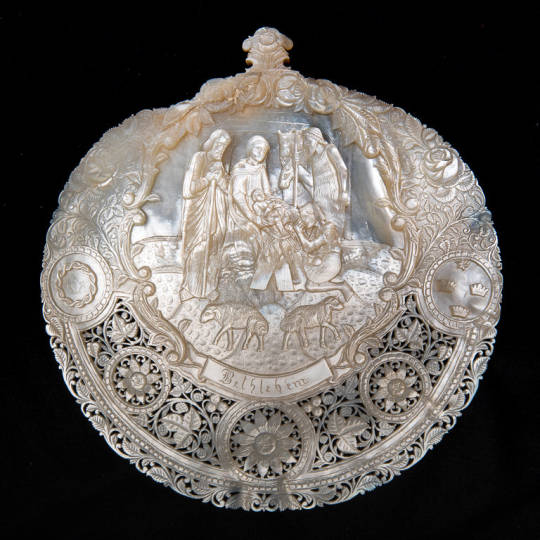

For reference, here's a Bethlehem mother of pearl carving I grabbed quickly from Google, and my necklace. They do indeed, look like very similar if not the same styles
#cipher talk#Funnily enough part of why I like it is because it reminds me of these little mother of pearl charms you sometimes find in Coptic jewelry#Particularly the ones that come to mind for me are from like. The 5th-7th century because I Do History Here#Palestinian art
4 notes
·
View notes
Text
youtube
Lecture: Dvāravatī Art and the Culture of Early Thailand – Between Tradition and Innovation, March 25, 2024
Daniel F. and Ada L. Rice Research Fellow Nicolas Revire discusses the material cultures of Thailand’s ancient Dvāravatī kingdom.
Archeologists and historians are still uncovering Dvāravatī—an Indianized culture, kingdom, and art style that emerged in Southeast Asia. Though grounded in neighboring Indic artistic traditions, this 7th–8th century material culture also encompasses local innovations. In this talk, Revire maps what we know about Dvāravatī art and the history of early Thailand.
The Art Institute of Chicago
#art institute of chicago#Thailand#Dvaravati kingdom#7th century#8th century#art#art history#Buddhism#Hinduism#archaeology#history#cultural amalgam#Mon people#Nicolas Revire
2 notes
·
View notes
Text

~ Armored Guardian (Tomb Figure).
Place of origin: China
Date: A.D. 675–725
Medium: Buff earthenware with polychromy and gilding.
#history#museum#archeology#archaeology#asian art#china#chinese#armored guardian#tomb figure#7th century#8th century#a.d. 675#a.d. 775
376 notes
·
View notes
Photo

It’s time for a threesome with Jesus!
I am actually extremely charmed to see a historic wedding ring of any kind (this one dates from the 7th century) but deeply amused by the description:
On the flat, oval-shaped bezel, Christ in the center, recognizable by his cruciform nimbus, extends his protective arms over the shoulders of a couple, also nimbus.
This is a translation from the French, so in this case I’m pretty sure Nimbus means “haloed”. There are just so many jokes, though. Starting with “Leave room for Jesus” and ending with “Where’s that I Don’t Consent meme when you need it.”
[ID: A gold ring, shown with the top bezel facing forward; three figures in halos are visible on the bezel, two of them in dark robes, one in robes that may once have been dark.
#louvre#religious art#classical jewelry#idek what the 7th century is considered but classical sounds good
21 notes
·
View notes
Photo


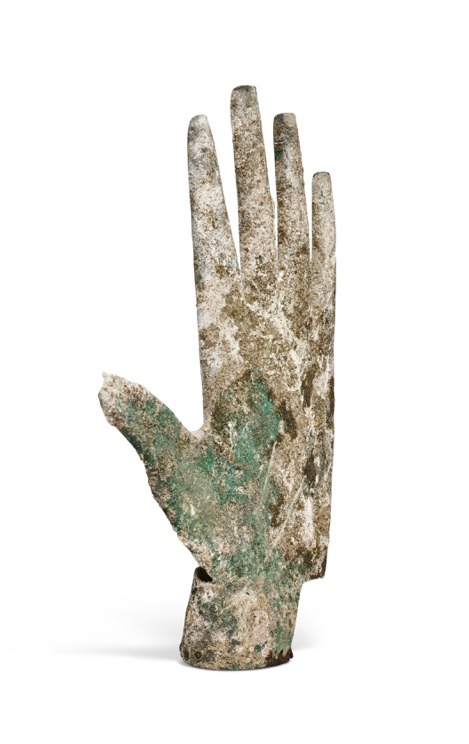
A VILLANOVAN BRONZE VOTIVE HAND
CIRCA 7TH CENTURY B.C.
8 1/4 in. (21 cm.) high.
Votive offerings gained increasing popularity throughout Etruria, southern Latium and later northern Campania from the 7th Century onwards. Most gods were thought to possess the power to heal, and the sick flocked to their sanctuaries for a cure or to pray for future health. Predominantly these dedications depicted the parts of the human anatomy that needed healing. In particular in the area of Vulci many graves have been discovered containing pairs of hands cut from a sheet of bronze, rolled up at the base to form the wrist.
#A VILLANOVAN BRONZE VOTIVE HAND#CIRCA 7TH CENTURY B.C.#bronze#ancient artifacts#archeology#archeolithic#history#history news#ancient history#ancient culture#ancient civilizations#ancient art#villanovan culture#etruscan civilization
92 notes
·
View notes